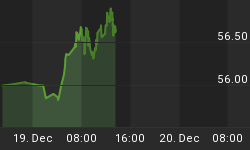Dow Jones Industrial Average 10,487
Value Line Arithmetic Index 1,882
30-Year Treasury Index 4.30%
Gold 1/10 Ounce $44.2
The Big Picture for Stocks
The cycle is negative into 2006.
Technical Trendicator (1-4 month trend):
Stock Prices Down
Bond Prices Down
Gold Price Up
In July of 2001, I wrote this in my column at Merrill Lynch:
"[The 4-year cycle] has been persistent, going back even 200 years. In recent years, there have been stock market bottoms approximately every 4 years. Such bottoms include 1962, 1966, 1970, 1974, 1978, 1982, 1987 (a year late), 1990, 1994, and 1998. The next one would fall in 2002.
The accompanying chart shows a comparison of the Dow from the low of the current 4-year cycle versus the Dow during a previous 4-year cycle of the early 1970's. There are significant similarities.
Here is strategy concept based on this cycle:
- First year (as identified by a significant drop in the 4 th year)---BUY AND HOLD.
- Second year ---BUY ON DIPS.
- Third year ---TRADE FOR SHORT TERM PROFITS. KEEP STOP LOSSES IN.
- Fourth year ---HOLD CASH AND WAIT PATIENTLY.
Looking closely at the chart, if the parallel continues, we could expect a bounce in the Dow back to the umbrella line into August, then down sharply into next year [2002]."
It is amazing how predictive the 4-year cycle has been. The words and advice I wrote almost exactly four years ago turned out to be correct. The market had a severe downward period into 2002. Then a new bull market began. Today, were are in exactly the same point in the cycle. The advice is the same now as then:
Hold cash and wait patiently.
While we occasionally find opportunities that are worth holding through a cycle (our Special Situations list), the bulk of your money ought to be in cash, in my opinion. Our Special Situations have had spectacular results - annualized rates of return in excess of 100% per annum, but we cannot expect such high returns to continue indefinitely.
The Dow peaked out for this cycle in March 2005, and the broader market indexes probably peaked in August. You can see the history of the 4-year cycle in the Dow in the table below.
















